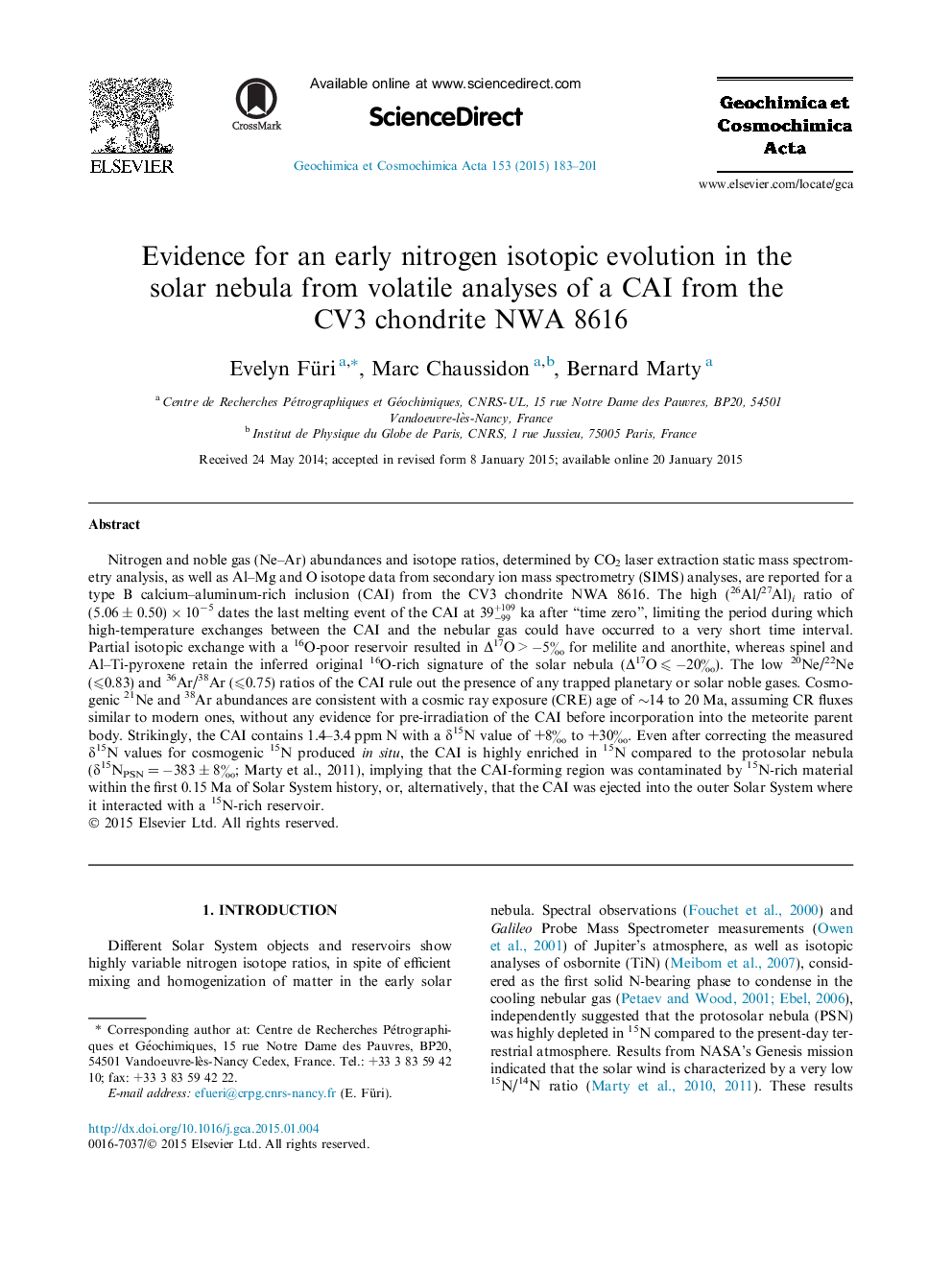| Article ID | Journal | Published Year | Pages | File Type |
|---|---|---|---|---|
| 4701976 | Geochimica et Cosmochimica Acta | 2015 | 19 Pages |
Nitrogen and noble gas (Ne–Ar) abundances and isotope ratios, determined by CO2 laser extraction static mass spectrometry analysis, as well as Al–Mg and O isotope data from secondary ion mass spectrometry (SIMS) analyses, are reported for a type B calcium–aluminum-rich inclusion (CAI) from the CV3 chondrite NWA 8616. The high (26Al/27Al)i ratio of (5.06 ± 0.50) × 10−5 dates the last melting event of the CAI at 39-99+109ka after “time zero”, limiting the period during which high-temperature exchanges between the CAI and the nebular gas could have occurred to a very short time interval. Partial isotopic exchange with a 16O-poor reservoir resulted in Δ17O > −5‰ for melilite and anorthite, whereas spinel and Al–Ti-pyroxene retain the inferred original 16O-rich signature of the solar nebula (Δ17O ⩽ −20‰). The low 20Ne/22Ne (⩽0.83) and 36Ar/38Ar (⩽0.75) ratios of the CAI rule out the presence of any trapped planetary or solar noble gases. Cosmogenic 21Ne and 38Ar abundances are consistent with a cosmic ray exposure (CRE) age of ∼14 to 20 Ma, assuming CR fluxes similar to modern ones, without any evidence for pre-irradiation of the CAI before incorporation into the meteorite parent body. Strikingly, the CAI contains 1.4–3.4 ppm N with a δ15N value of +8‰ to +30‰. Even after correcting the measured δ15N values for cosmogenic 15N produced in situ, the CAI is highly enriched in 15N compared to the protosolar nebula (δ15NPSN = −383 ± 8‰; Marty et al., 2011), implying that the CAI-forming region was contaminated by 15N-rich material within the first 0.15 Ma of Solar System history, or, alternatively, that the CAI was ejected into the outer Solar System where it interacted with a 15N-rich reservoir.
